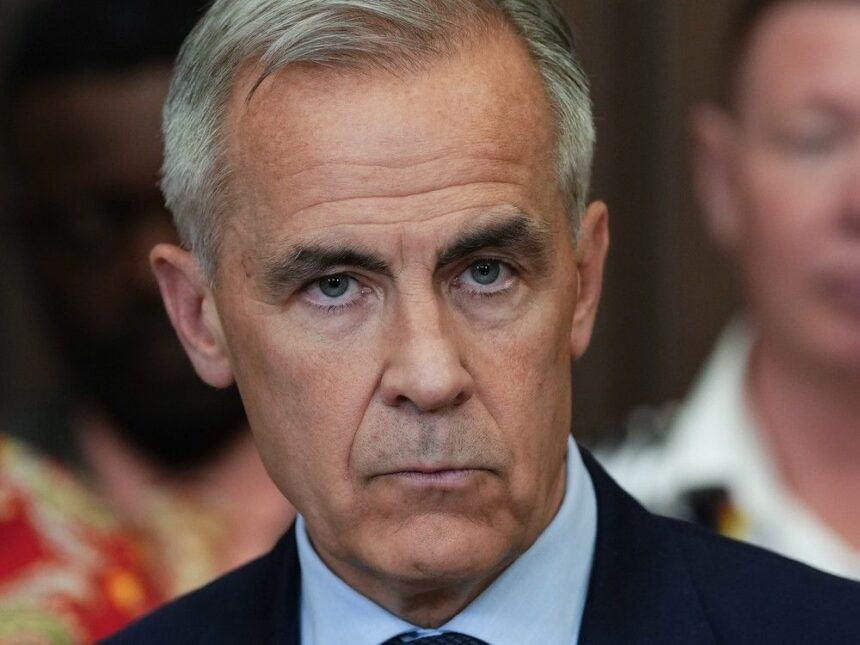I spent the better part of last Tuesday at the Assembly of First Nations special gathering in Ottawa, where Mark Carney, the heavyweight Liberal recruit and former central banker, laid out an ambitious Indigenous economic development strategy that landed with mixed reception among First Nations leaders.
The auditorium at the Shaw Centre hummed with skepticism as Carney, chair of the Liberal government’s economic council, unveiled plans for major development powers that he framed as transformative for Indigenous communities across Canada.
“This is about creating opportunity, not imposing solutions,” Carney told the assembly, his voice carrying that distinct blend of economic authority and political ambition. But several chiefs sitting around me exchanged knowing glances that suggested they’d heard similar promises before.
The centerpiece of Carney’s proposal involves creating a new “major projects” authority that would fast-track resource development on Indigenous lands. According to documents obtained from the Department of Finance, this framework would potentially unlock billions in investment while providing First Nations with unprecedented decision-making power.
Chief Cadmus Delorme of Cowessess First Nation in Saskatchewan offered measured support during his response panel. “Economic reconciliation must include real authority, not just consultation checkboxes,” Delorme said, while acknowledging that many communities remain “deeply skeptical after generations of broken economic promises.”
The timing of Carney’s pitch isn’t accidental. Sources within the Liberal government confirm that Prime Minister Justin Trudeau sees Indigenous economic development as a potential wedge issue in the next election, with polling from Abacus Data showing 67% of Canadians support accelerated resource development if Indigenous communities directly benefit.
What struck me most during the gathering was the fundamental tension between Ottawa’s vision of efficiency and the First Nations’ insistence on sovereignty. When Oneida Nation representative Randall Phillips challenged Carney on environmental oversight provisions, the room broke into spontaneous applause.
“We’ve spent decades fighting for our treaty rights to be recognized,” Phillips said. “Now you’re suggesting a streamlined process? The details matter tremendously here.”
The proposal comes amid Statistics Canada‘s latest figures showing on-reserve unemployment hovering at 23.4% nationally – nearly four times the Canadian average. This economic reality framed much of the pragmatic side of the discussion.
Walking through the conference hall during breaks, I spoke with several chiefs from northern communities who expressed cautious interest in Carney’s proposal. Chief Stanley Houle from a northern Alberta First Nation told me his community needs jobs but remains wary of outside control.
“Our young people are leaving. We need economic opportunities,” Houle explained while we grabbed coffee between sessions. “But we’ve seen too many projects where the benefits flow south while the environmental impacts stay with us.”
Carney’s record gives his proposal significant weight. Having led both the Bank of Canada and Bank of England before returning to Canadian politics, he carries rare credibility in financial circles. Indigenous Services Canada confirmed the government has earmarked $500 million in potential initial investment for communities that participate in the new framework.
AFN National Chief Cindy Woodhouse Nepinak publicly acknowledged the potential while emphasizing sovereignty must remain central. “Economic development cannot come at the expense of self-determination,” she said during her closing remarks. “Our communities must lead these initiatives, not simply participate in them.”
The Assembly’s economic development committee will evaluate Carney’s proposal over the coming months, with regional consultations planned across the country. An interim report is expected before Parliament rises for summer.
What Carney may not fully appreciate is how the proposal lands against the backdrop of Bill C-53, legislation currently moving through Parliament that would create a new National Council for Reconciliation. Several chiefs I spoke with view these simultaneous initiatives with suspicion – wondering if economic development is being positioned ahead of deeper reconciliation work.
Riley Yesno, an Indigenous policy researcher at the University of Toronto, shared similar concerns when I called her after the gathering. “There’s a pattern of prioritizing economic development frameworks that align with federal priorities while more challenging rights recognition work gets extended timelines,” Yesno noted.
The Liberal caucus appears divided on aspects of Carney’s approach. Two government sources speaking on background confirmed that some Indigenous MPs have raised concerns about consultation processes, while others see economic opportunity as the most direct path to practical sovereignty.
Meanwhile, Conservative leader Pierre Poilievre has already signaled his party would support expedited resource development but questions the administrative framework Carney proposes.
As I left the Shaw Centre, watching First Nations delegations board buses back to their hotels, the conversations continued with animated intensity. What was clear is that Indigenous communities aren’t rejecting economic development – they’re demanding it happens on their terms, with their priorities leading the way.
Whether Carney’s proposal can thread that needle remains to be seen. But as one Dene elder told me before departing: “We’ve been having these conversations since before Carney was at the Bank of Canada. We’ll still be having them long after he’s moved on to whatever comes next.”
In a political landscape where Indigenous economic reconciliation remains both necessary and contentious, Carney’s proposal represents yet another chapter in Canada’s ongoing struggle to align economic ambition with meaningful reconciliation. The coming months will determine whether this latest initiative produces partnership or just another round of promises unfulfilled.






